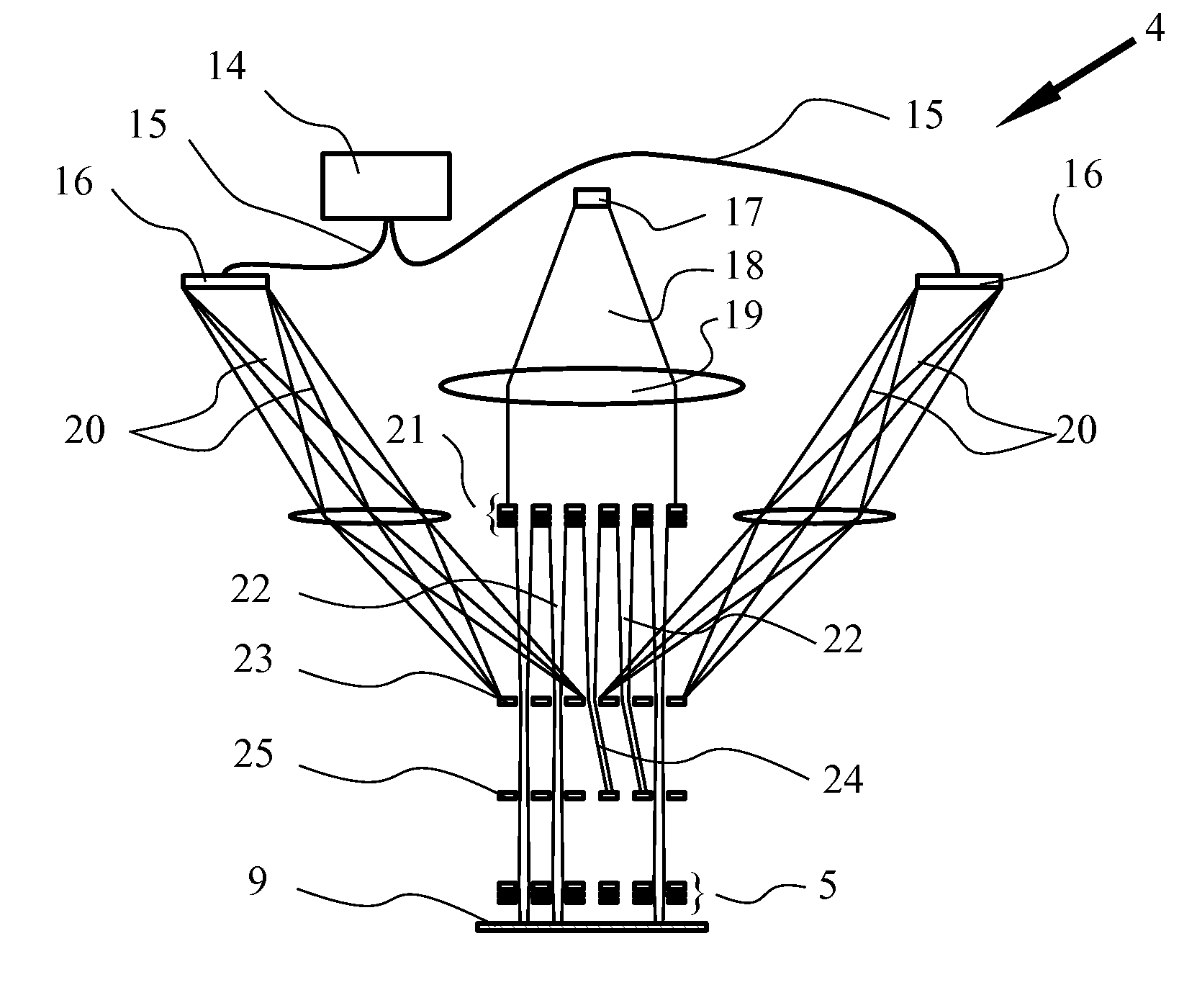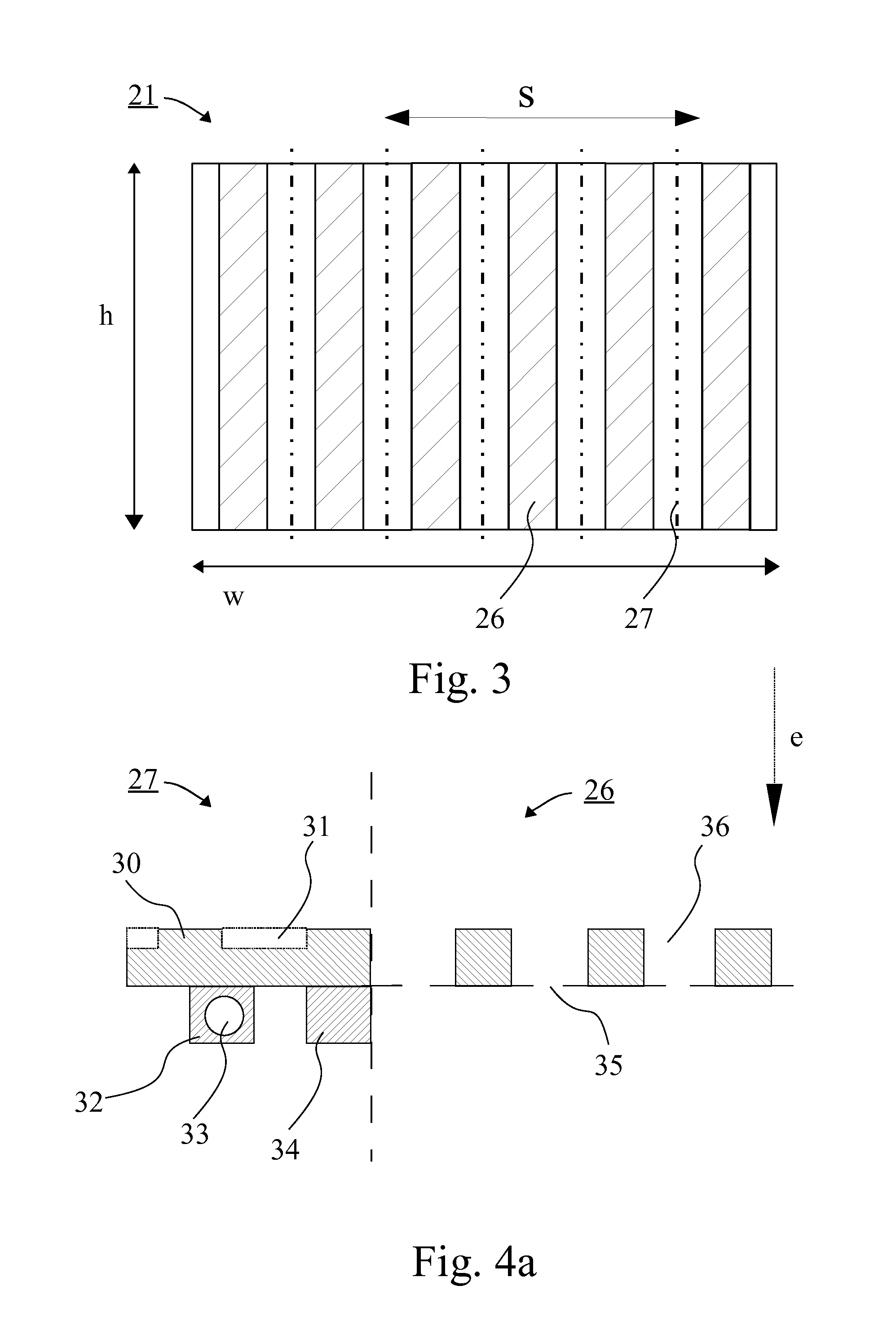Lithography system and method of refracting
- Summary
- Abstract
- Description
- Claims
- Application Information
AI Technical Summary
Benefits of technology
Problems solved by technology
Method used
Image
Examples
first embodiment
[0062]FIG. 4a schematically shows a cross-section of the aperture array, specifically the transition area between an aperture area 26 and aperture free area 27. In this figure, the direction of the charged particle beam and the direction of the accelerating electric field are indicated by arrow e. While only part of the aperture area 26 and aperture free area 27 is shown, both areas extend in the same plane, and multiple beam and non-aperture areas may be present as shown in FIG. 3. In this embodiment, the second electrode comprises a body 30 in which blind holes 31 are present, which blind holes are equal to the size of the apertures 36. These blind holes serve to preserve the uniformity of the electric field over the transition from aperture area to non aperture area. By maintaining the uniformity of the electric field, the charged particle beam is not disrupted right at the transition from aperture area to non aperture area.
[0063]The electrode may comprise support struts 32, 34 i...
second embodiment
[0065]FIG. 4b schematically shows a cross section of the aperture array, where the aperture array is effectively raised above the surface of the body. It was found that creating one large blind hole 40 in the aperture free area 27, effectively raising the upper surface of the aperture area 26 above the upper surface of the aperture free area (in a direction facing the source, from which the beamlets arrive at the aperture array) also helps to preserve the uniformity of the electric field. Advantageously, this reduces the complexity of the aperture free area thus easing manufacture and reducing cost.
[0066]In the embodiments according to FIGS. 4a and 4b, the current limiting apertures may be recessed below the upper surface of the aperture area 26 facing the source. The recesses may be made by forming the apertures with a larger diameter entry (where beams enter the aperture) and smaller diameter current limiting portion part way along the bore of the aperture or at the exit (where th...
PUM
 Login to view more
Login to view more Abstract
Description
Claims
Application Information
 Login to view more
Login to view more - R&D Engineer
- R&D Manager
- IP Professional
- Industry Leading Data Capabilities
- Powerful AI technology
- Patent DNA Extraction
Browse by: Latest US Patents, China's latest patents, Technical Efficacy Thesaurus, Application Domain, Technology Topic.
© 2024 PatSnap. All rights reserved.Legal|Privacy policy|Modern Slavery Act Transparency Statement|Sitemap



